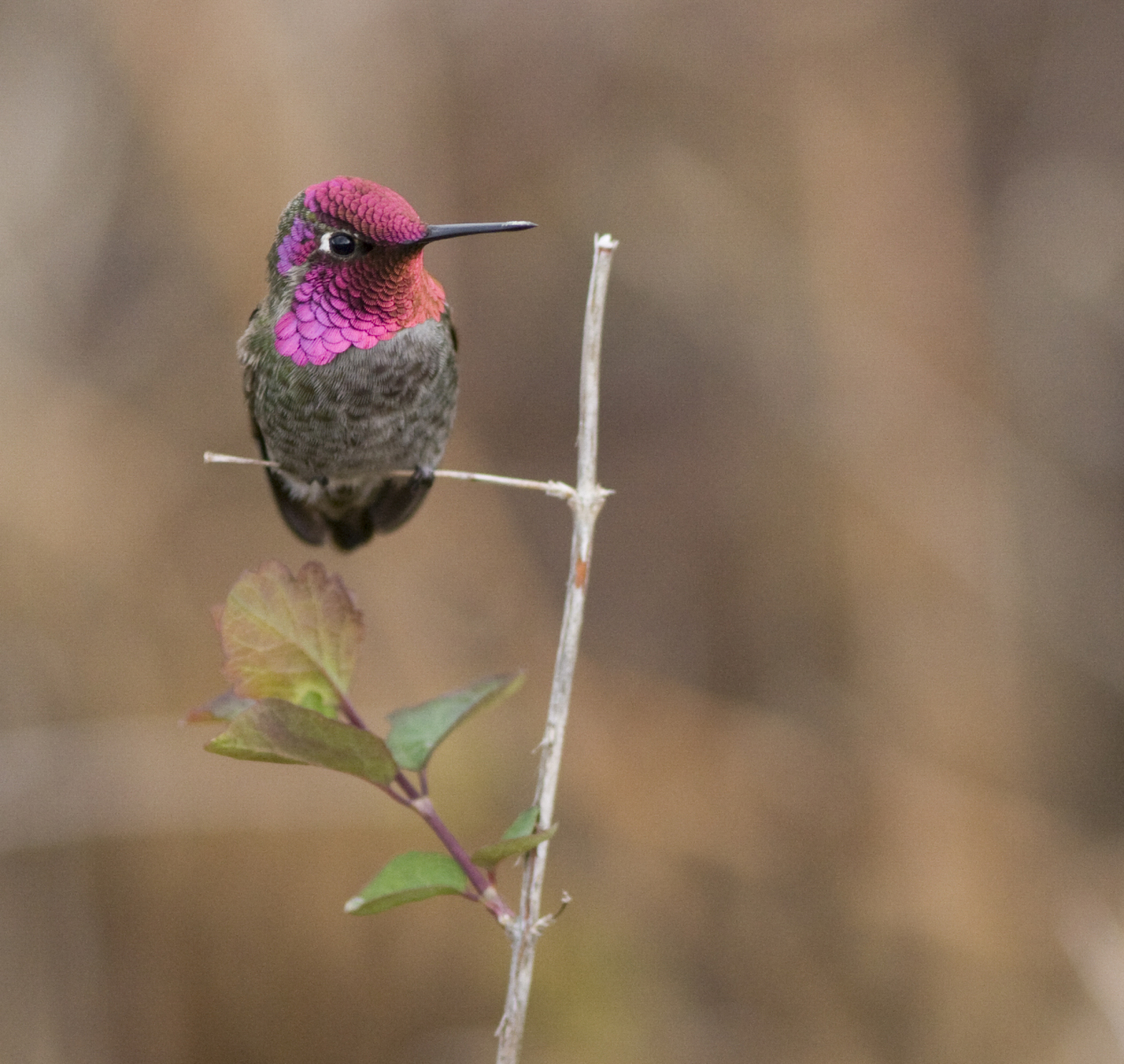Up in the air
Interview with
The ability of an animal to manoeuvre is fundamental to its survival and is the product of millions of years of evolution. So it's surprising then that we haven't really got a way to quantify manoeuverability and that's largely because it's extremely hard to study in an objective and consistent way. But the University of British Columbia's Doug Altshuler and his colleagues have now managed to do this for the first time by spending literally years painstakingly recording birds in a  special flight chamber and using a computer to extract the relevant flight metrics...
special flight chamber and using a computer to extract the relevant flight metrics...
Doug - These experiments were done with the Anna’s hummingbirds which is a North American hummingbird on the west coast of Canada and the United States. We would capture them, get them used to the chambers, and then that was really all we had to do. The chamber was relatively large for a hummingbird – 5 feet by 5 feet by 10 feet. If we put a feeder and some bird seeds in there, they would take to it quite readily. If we put two birds in there, they would often compete with each other.
Chris - But how did you watch them? Did you have cameras that were filming and then you were able to go and analyse that footage and how did you challenge them in order to see what manoeuvres they could or couldn’t do, and how fast?
Doug - We didn’t challenge them to make specific manoeuvres. Instead, we just let them do the manoeuvres that they showed us. The only challenge that we occasionally employed was having a competitor. But it turns out that the competitor didn’t really change their manoeuvrability that much. The way we measure manoeuvrability is by using automated tracking system. This was composed of 4 cameras that were filming the chamber simultaneously and the way the system works is that it films the chamber so we can see the birds moving around. It also has an image of the background. What our computers do is that they scan through those images and they look for changes, which is to say when the bird is moving relative to the background with no bird. The other thing the computer does is not only find the birds but it also figures out what direction they're pointing. This is all done semi-automatically. That means that up to 200 times a second, we’re getting data on where the bird is in the chamber and the way the bird is oriented. That turned out to be a very rich dataset that yielded us literally millions of points for this study.
Chris - Is there now sort of an SI unit of manoeuvrability that you can come up with because of this study? You can say, “Aha, now we have a way of actually objectively quantifying manoeuvrability.”
Doug - We have found actually that there is no SI unit of manoeuvrability. The reason is because the natural manoeuvres the bird show us were complex, but we did have to measure this somehow. What we finally came up with was actually a suite of measures of manoeuvrability. These were very fundamental things. We defined a measure of manoeuvrability for example that is the maximum acceleration that a bird shows in the horizontal plane. We also came up with another one which was the maximum acceleration that the bird gives us in a vertical dimension. We also came up with some other manoeuvres that were specifically related to turns such as the minimum radius that a bird gives during an arcing turn or the maximum centripetal acceleration that a bird gives during an arcing turn. So we have a suite of different manoeuvrability measures that we could then compare between individuals.
Chris - If you take those measures and relate them to other features of the birds such as muscle mass, such as wing area, do you see relationships emerging now? That means that you can actually begin to make predictions about other animals or you can take those measurements and parameters from other animals, and make predictions about their potential for manoeuvrability.
Doug - So our initial question is, is manoeuvrability more determined by muscle capacity or wing and body morphology. And so, once we had these suite of manoeuvres, we could then test that. What we found was that the majority of the manoeuvres that we defined were more explained by muscle capacity than they were by wing morphology. Really only, a very small number of manoeuvres were related to wing morphology over those manoeuvres were heavily related to wing morphology.
Chris - So put simply, you can basically achieve anything you want to achieve if you’ve got enough power to do it. So it’s pretty similar to politics in the modern era.
Doug - That’s a good way to think about it actually! I think that it also shows us the efficiency with which one can execute a manoeuvre is probably very much influenced by your morphology. But the thing about manoeuvres is they're very brief. We’re often doing them for things that are important such as running away from something or running towards something in the case of humans. Similarly for the birds, I think manoeuvrabilities were so short that they don’t really care much about the efficiency of the manoeuvres. Instead, they can use this high muscle capacity to power their way through even an otherwise inefficient manoeuvre.
- Previous Beneath the surface
- Next Going back in time










Comments
Add a comment